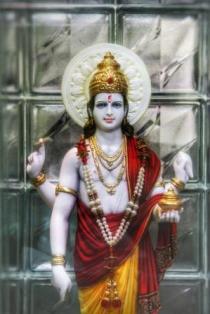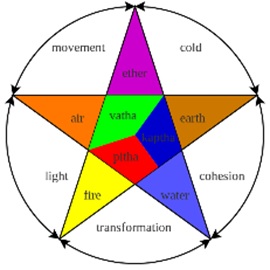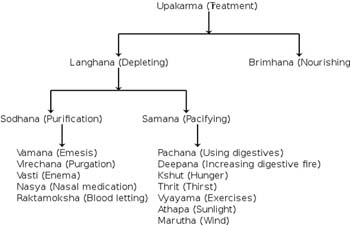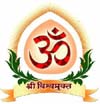
The science which forms the basis of various aspect of life. The main classical Ayurveda texts begin with accounts of the transmission of medical knowledge from the Gods to sages, and then to human physicians.
In Sushruta Samhita (Sushruta’s Compendium), Sushruta wrote that Dhanvantari, Hindu god of Ayurveda, incarnated himself as a king of Varanasi and taught medicine to a group of physicians, including Sushruta.
Ayurveda therapies have varied and evolved over more than two millennia. Therapies are typically based on complex herbal compounds, minerals and metal substances (perhaps under the influence of early Indian alchemy or rasa shastra). Ancient Ayurveda texts also taught surgical techniques, including rhinoplasty, kidney stone extractions, sutures, and the extraction of foreign objects.
In Sushruta Samhita (Sushruta’s Compendium), Sushruta wrote that Dhanvantari, Hindu god of Ayurveda, incarnated himself as a king of Varanasi and taught medicine to a group of physicians, including Sushruta.
Ayurveda therapies have varied and evolved over more than two millennia. Therapies are typically based on complex herbal compounds, minerals and metal substances (perhaps under the influence of early Indian alchemy or rasa shastra). Ancient Ayurveda texts also taught surgical techniques, including rhinoplasty, kidney stone extractions, sutures, and the extraction of foreign objects.
Aim Of Ayurveda
The sole intention of this science is to help people attain
- Dharma
- Artha
- Kama
- Moksha
Having said that Ayurveda also states that attainment of wealth is not the only thing that can help you lead a happy life. Spiritual upliftment is equally important factor and one can achieve this divine happiness only by having good health. Ayurveda also emphasizes that prevention of a disease is always preferred and hence has indicated measures to maintain the health of the healthy and treat the ailment of the diseased.
Eight components
he earliest classical Sanskrit works on Ayurveda describe medicine as being divided into eight components.
This characterization of the physicians’ art, “the medicine that has eight components” (Skt. cikitsāyām aṣṭāṅgāyāṃ चिकित्सायामष्टाङ्गायाम्), is first found in the Sanskrit epic the Mahābhārata, ca 4th century BCE the components are
- Kāyacikitsā: general medicine, medicine of the body
- Kaumāra-bhṛtya: the treatment of children, pediatrics
- Śalyatantra: surgical techniques and the extraction of foreign objects
- Śālākyatantra: treatment of ailments affecting ears, eyes, nose, mouth, etc. (“ENT”)
- Bhūtavidyā: pacification of possessing spirits, and the people whose minds are affected by such possession
- Agadatantra: toxicology
- Rasāyanatantra: rejuvenation and tonics for increasing lifespan, intellect and strength
- Vājīkaraṇatantra: aphrodisiacs and treatments for increasing the volume and viability of semen and sexual pleasure.

To maintain the three dosha & sapta dhatu Ayurveda follows the concept of :-
- Dinacharya, which says that natural cycles (waking, sleeping, working, meditation etc.) are important for health. Hygiene, including regular bathing, cleaning of teeth, skin care, and eye washing, is also a central practice.
- Rutucharya this are the seasonal regimen one should follow in each season.
Treatment & Prevention

Ayurveda also explains about MANAS CHIKITSA (Mental Disorder) :-
Ayurveda has always emphasized the importance of treating the mental aspects for complete relief. Sattva, Raja and Tama are considered the manasdosha amongst which one should aim at developing the sattvaguna as it can help to keep our mind stable. Increase in Raja guna leads to disturbed coordination of mind and body and causing unnecessary thinking. Increase in Tama guna makes one lethargic and non-enthusiastic thereby generating negative thought’s in his mind.Increase in good qualities of Mana(Mind) which is also called as Sattva. Hence this treatment is also termed as SattvavajayaChikitsa.
